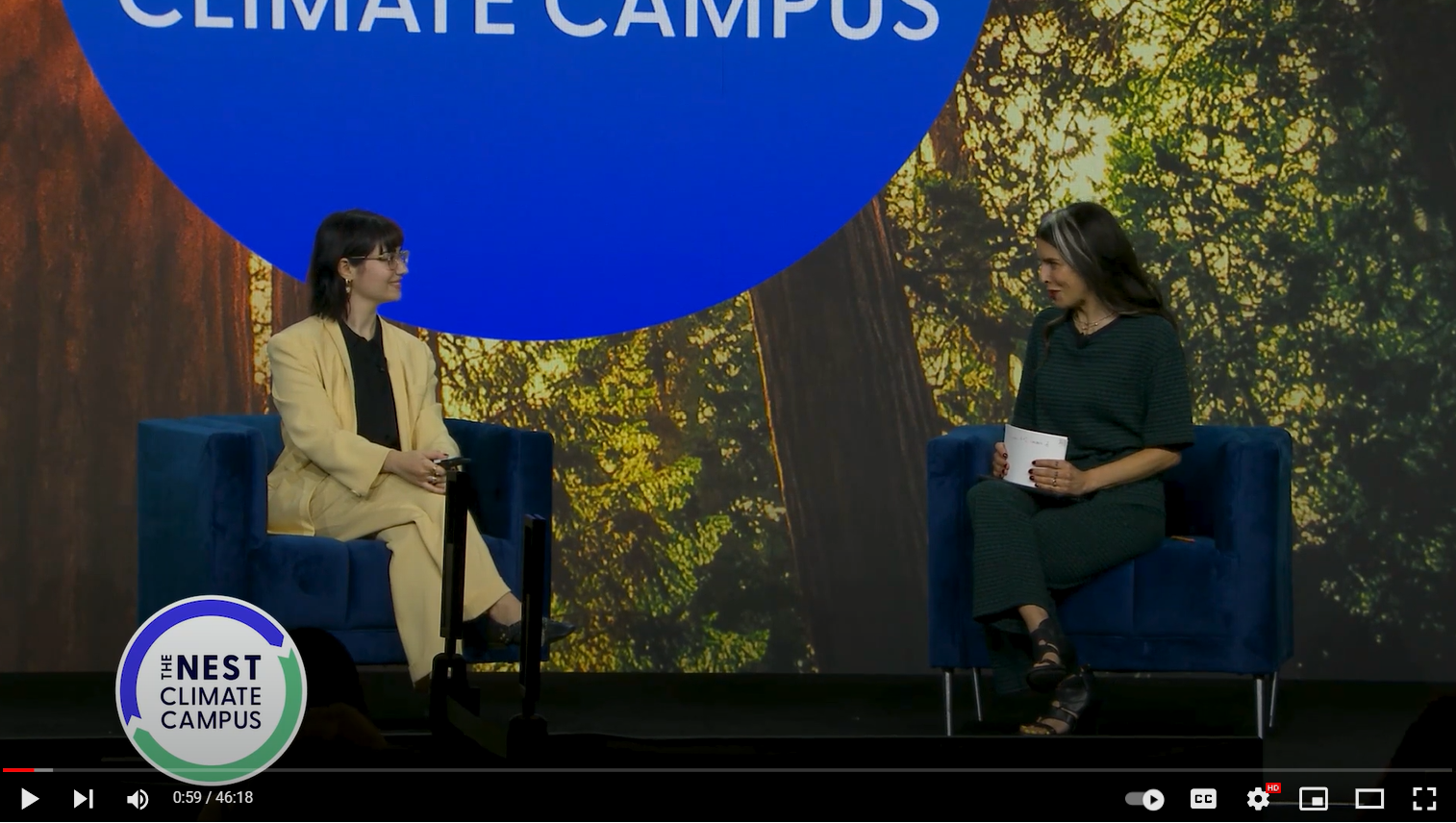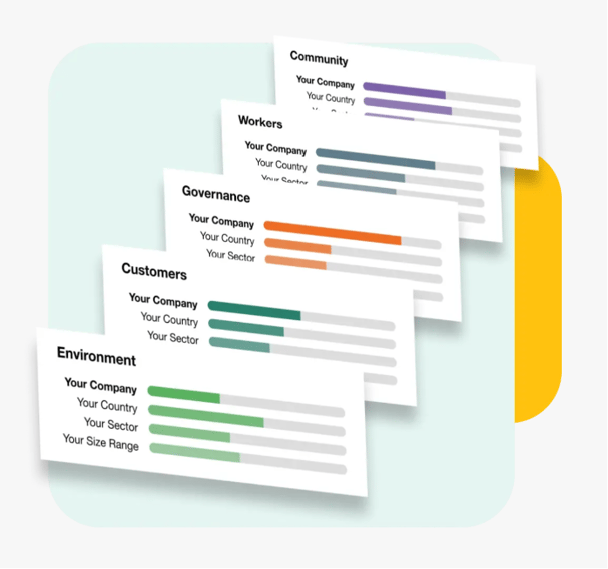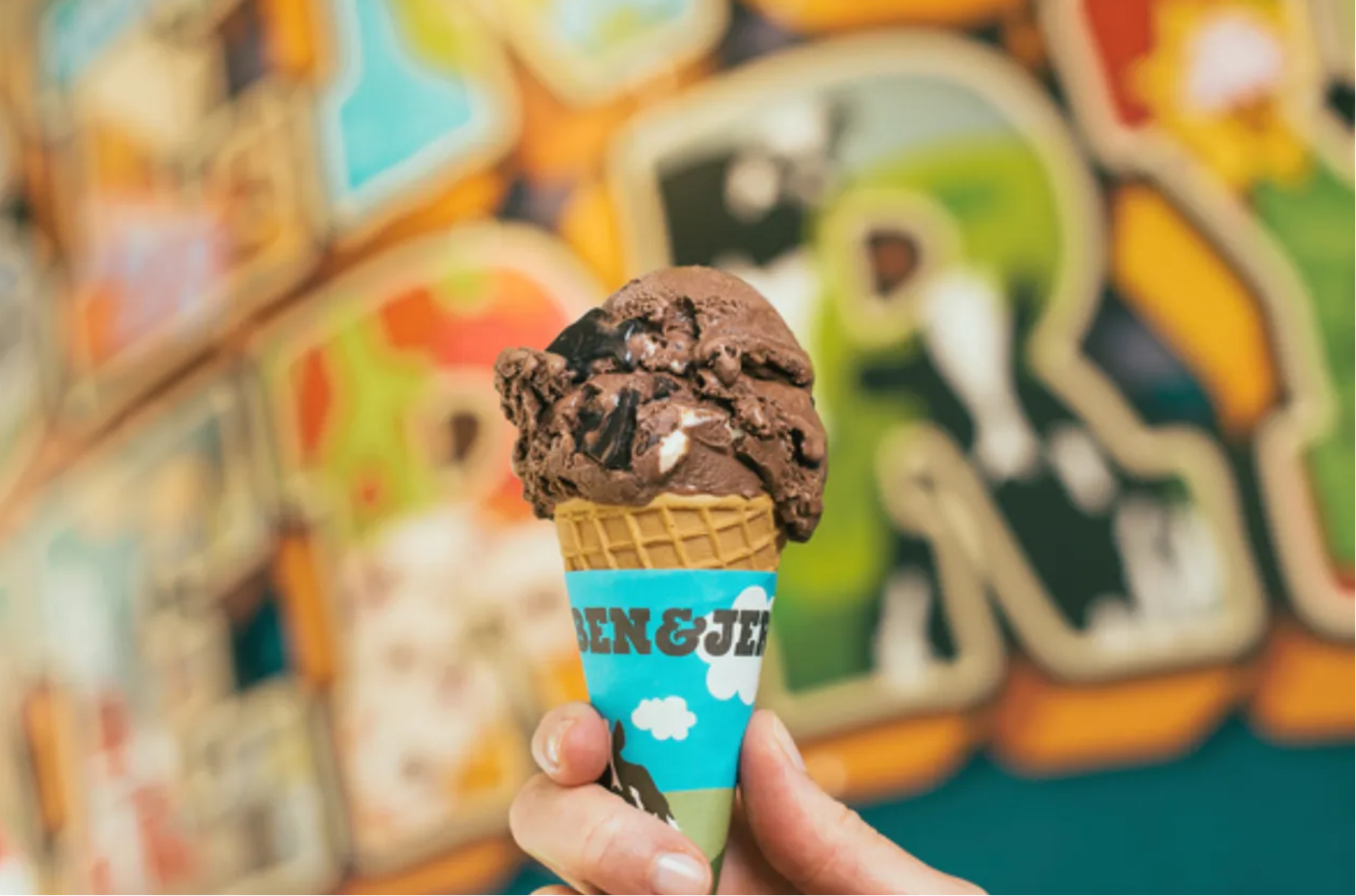ESG Trailblazer: Jamie Richards reveals how sustainability builds brand value at amika + Eva NYC
| As a B Corp, at Oxford, we’re passionate about helping companies bridge the ‘say/do’ gap when it comes to growth that’s good for people, planet, and profit. We know no one organization or individual has all the answers – so we love to share brilliant ideas and solutions. Here, Jamie Richards, Director of ESG at amika + Eva NYC shares her journey to bake in sustainability – and the business benefits that delivered. |
Jamie – How did you get into sustainability in the first place? Why did you choose this path?
I've always wanted to work in environmental science, but I never really knew exactly what I wanted to do. I studied at Environmental Policy Decision Making at Ohio State – i.e the rules and regulations surrounding the environment, and also consumer behavior. The School of Environment and Natural Resources is over 50 years old, so it’s credible. I specialized in sustainability metrics, so impact, and associated carbon emissions.
How did you land at amika + Eva NYC?
When I left to go to the workforce, anything entry-level really was for a renewable energy company, or government. But I really wanted to go into private business because I wanted to work for a brand that was not consciously sustainable, and work to improve it.
I got hired as the Assistant Purchasing Coordinator at amika + Eva NYC because of my background in metrics. The Procurement team was trying to identify ‘Is it actually worth it to go into PCR?’ I could show them exactly what that looked like in the business model and whether it would be worth making that decision.
We’ve got a culture of pushing the boundaries. It’s very much a start-up mindset, with little hierarchy. People were always very receptive – if I said, ‘We need to make a change’ and could justify why, whether it was a risk or an opportunity, to the business or to marketing, they’ve always been ready to listen and make the change.
| At Climate Week in New York, you gave some insight into the journey you’ve been on with amika + eva NYC. Can you walk us through that? | 
The Beauty of ESG: A Fireside Chat with Amika + Eva NYC, YouTube |
In the last paragraph of the job description in Procurement, they had a ‘Green Team’ so with my background, I felt I could pull my weight! I’m thankful I started work in procurement because it helped me establish relationships in the supply chain, which is where the majority of emissions lie. I understand our contract manufacturers, logistics, and the operations behind our products. and I am able to suggest different sustainability initiatives that I know will work within the business model.
Now we're involved in everything that the brands do. In the beauty category, the top priorities are effective products, price point, ……….and then it's sustainability. We’ve had to convince brand teams that this is a way for the brands to show up differently on the shelf, become more resilient, and manage risk, so it’s become a necessity. But it’s taken some time. And now we are doing all these amazing things; for example, we are pushing category sustainability in retail.
Why did you become a B Corp?
I chose an assessment that I thought would make the most sense to our consumers. Our consumers do not care if we are ISO certified. But a lot of B Corp is based on ISO. So if you're following the B Corp framework, you’re usually already adherent to ISO (and a lot of UN SDG's).
When COVID hit, we decided to go for B Corp as a responsible business practice. We did the submission in three months and went into the queue which, was 6 to 8 months. We found out that we were in evaluation on a Tuesday in May, and on that Thursday, we were acquired by a private equity company, which changes your entire governance structure. And the brand split legally, which meant that the assessment was no longer valid!
For 2 weeks, I focused only on the assessments to get them done and not lose the place in the queue. Because the documentation was already updated and redone, we went through verification in 30 days. (This was understandably a case study for B Corp.)
What have you done as a B Corp?
We have to take B Corp and really direct it to the audience.

For example, amika, is also a professional salon brand. So for the stylist community, we want the stylist to be confident and tell their clients who are in the chair, because that's a huge entry point for the brand —about how our people work, our direct community impact, and really celebrating how we take care of our workers in a wide range of ways. We did some salonships to talk about the importance of B Corp, focusing on what’s most important to the community and workers.
But we must ensure we ‘do no harm’ in the other categories. So we talk about responsible ingredients and ingredient efficacy, so the people category focuses on our partnership with sourcing and also data privacy. I meet with the education and professional teams regularly, talking about amika and sustainability, greenwashing 101, and how to navigate the sustainability space.
What are some of the business benefits?
It can drive penetration.
We're entering some retailers because we are sustainable, which offers more penetration. Retail partners know that Gen Z consumers specifically look for this. Retailers are looking to brands that carry that message. Those retailers have a big footprint. For example, we had a specific end cap at Target. As a new brand, we were not the kind of brand to get an end cap there! But we did because we're in the Target Zero program. We were able to increase sales, get an ongoing listing, and have eye-level shelf space.
It drives visibility.
At Sephora in Dubai, we got a huge window display, because we are one of the few brands that are not only performing but also hitting their highest climate guidelines. Retail partners will use this to push other brands along, driving them to follow the guidelines if they want what amika has. And asking about our climate policy and how we're addressing it so they can tell other brands how to follow suit.
It doesn’t always need to cost money!
We've actually saved a lot of money by doing sustainable practices, for example, our inbound transportation was around 60% of our emissions because we shipped everything. We moved to rail, which saved 900 metric tons of carbon and saved the company over $3 million. That's hitting our science-based target goal and driving cost efficiency. Next year, we're completely eliminating air shipping, removing another 10,000 metric tons, and saving $1 million more.
Investment does come into play when you integrate things like PCR. Those costs are owned by manufacturing logistics; they will hit the P&L. So there’s a choice there: go fully PCR and increase COGs or not. It will impact margin, but it is a way to stay relevant. The brands decided that it was really important to them and took a little bit of a hit of the reduced margin for better storytelling. So there was a tradeoff.
This all sounds a bit big and scary. How can brands get started?
Brand teams will want to know, ‘What can we do right now that we can talk about’? I’d start with partnerships. Find someone who is already doing truly great work, like:
TerraCycle
Someone who's going to take care of the end of the life of your product. Recycling is not the most impactful part of your supply chain, but it's very real to consumers.
Rainforest Alliance
A non-profit working to make responsible business the new normal. You can put a little widget when shoppers check out online, to donate a dollar to the forest, and then you get to see how many trees and plants there are–it’s very tangible.
4Ocean
We have a partnership with them. They hire full-time crews to recover plastic and other man-made waste from the open ocean and environments where plastic is at high risk of entering the ocean. They'll pay fishermen who can no longer fish because it's so polluted to actually go fish for plastic; you can ‘pull’ the equivalent of any plastic used in production out of the ocean, the plastic equivalent of carbon offset. And brands can talk about that.
You can do this whatever your budget: amika makes a $100,000 commitment to remove 100,000 pounds of plastic from the ocean, but Eva NYC is smaller and makes a $25,000 commitment, and that's great. You could do $1000, or you could do $1.00—it can be where the brand is at today.
So what’s next for amika and Eva NYC?
Now that amika is bigger, we’re going to be investing in our scope 3 emissions, which is like the ‘kitchen sink’ of emissions. We want to work with suppliers on investing in them to reduce their footprint because that's where our hotspots are. If we want to grow responsibly, we need to have a different partnership with them in order to reduce their emissions and have a say in their business. We're willing to invest in them; it's going to be a one-off and I'm working really closely with finance.
We'll be transitioning our model where, instead of offsetting all the scope 3, we're taking that offset money and instead investing in the company. It's like the difference between renting and owning. amika is growing so exponentially that we need to make some supply chain changes and invest some money to do that. Not just keep putting a Band-Aid on it.
My end-of-year goal is to then show the exact methodology and investments that we're making within this road map to net zero.
You’ve been incredibly generous with your time and your insight! Why is that?
Everybody in this space is afraid. They don’t want to be seen as green washing, so they do green hushing.
Other brands want to partner and learn. We don't keep this information secret. If someone reaches out and they want to talk, I always try to say yes. Sustainability metrics didn’t exist 15 years ago. So I'm always happy to help people learn.
A huge thanks to Jamie Richards for her generosity. We hoped that others will be inspired to try some of this and bridge the say/do gap. If you'd like more of Jamie's advice, you can download her 6 step action plan to Embedding Sustainability here:
At Oxford, we regularly bring groups of likeminded (or not so likeminded) people together to work through some of the thorniest challenges, with our teams in Europe and the US.
If you’d like to get on the list, drop us a line (you don’t have to be a B Corp).
Share this
You May Also Like
These Related Stories

What is a B Corp and why did Oxford become one?

Why purpose-led businesses must tell their stories

.png?width=657&height=57&name=OXFORD%20LOGO%20(1).png)

No Comments Yet
Let us know what you think